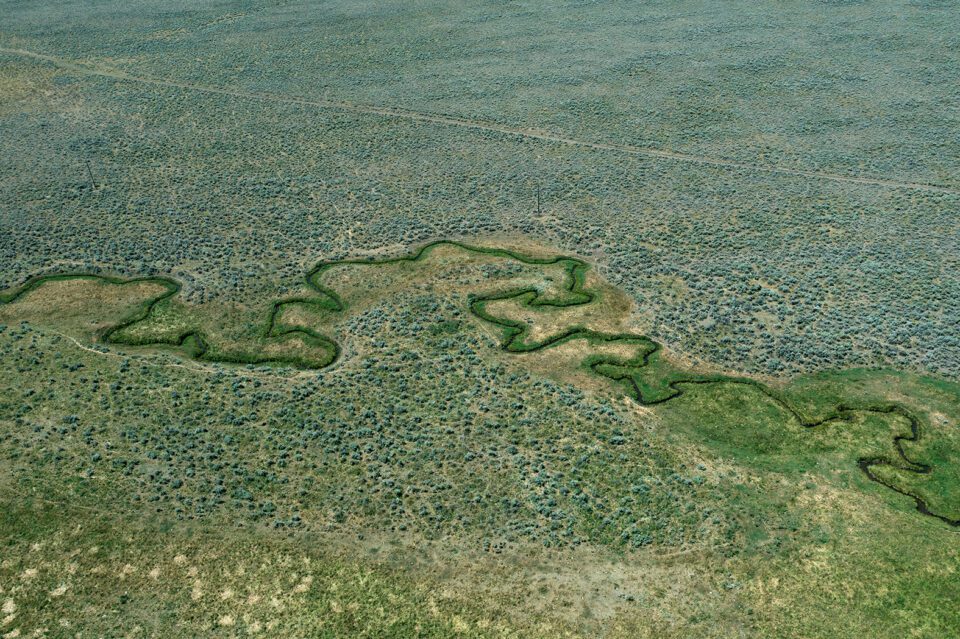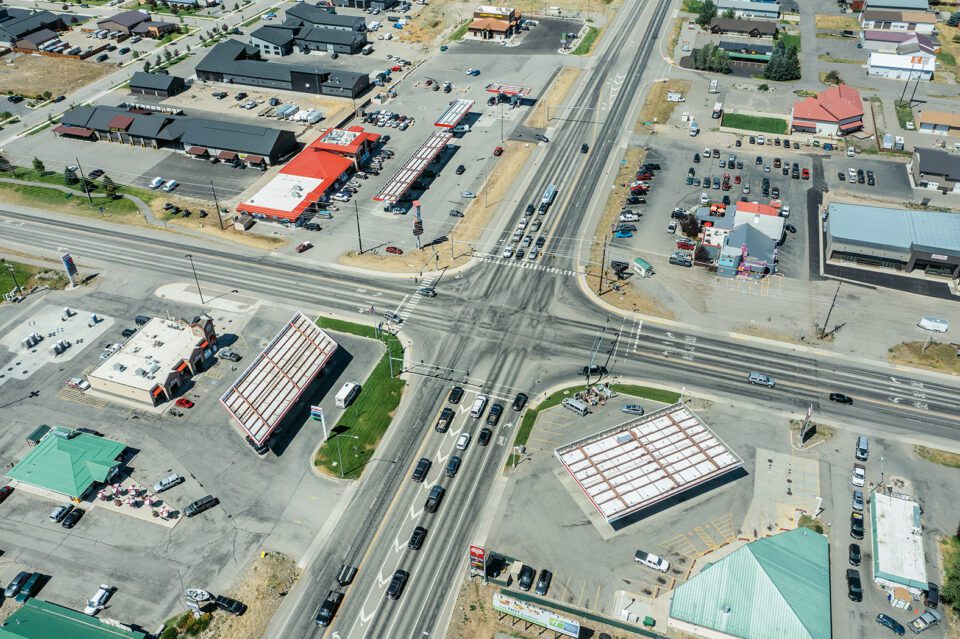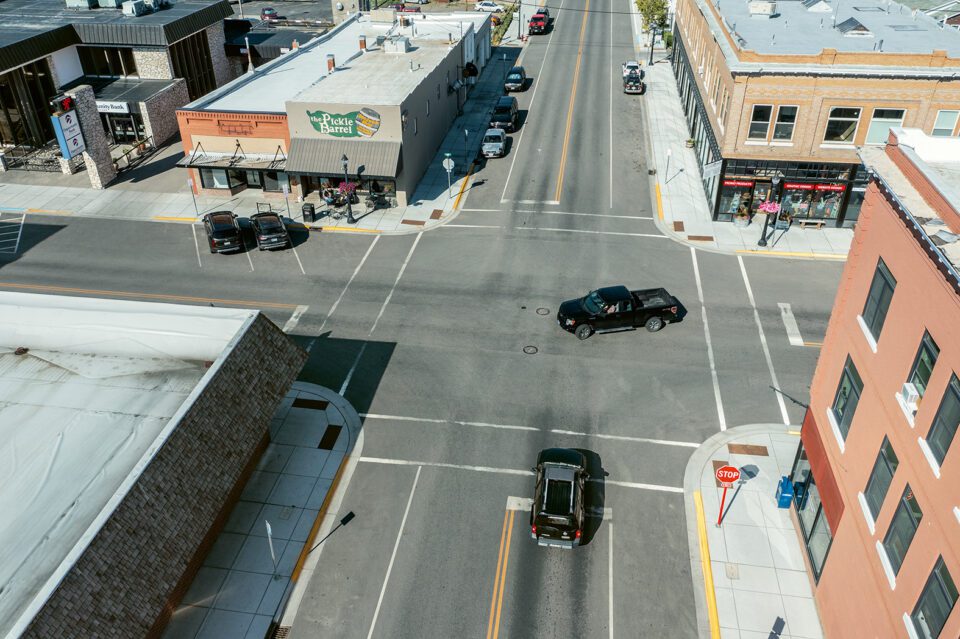In less-than-a-minute after a plane is airborne, or just before it lands, we experience the world from a perspective that is normally inaccessible at ground level. It is transformative. “We see communities abutting each other, what neighbourhoods look like, how villages develop and grow in relation to the land,” says Stephen Shore (b. 1947). It was this aerial vantage point that the artist, who is a pioneer of colour photography, wanted to embrace when shooting the series Topographies: Aerial Surveys of the American Landscape. The title of the project, which is published by MACK, is a deliberate nod to New Topographics, a 1970s movement that saw a group of American photographers examine the mark of humans on the environment. Shore’s pictures, alongside those of Bernd and Hilla Becher, Frank Gohlke, Lewis Baltz, Nicholas Nixon and Robert Adams, appeared in New Topographics: Photographs of a Man-Altered Landscape, a groundbreaking group show at George Eastman House, New York, in 1975. Here, Shore talks to Aesthetica about working with drones for his new book and seeing beauty in the banal.

A: What enticed you to start exploring the aerial perspective? Were you consciously revisiting your work from the 1970s as part of the New Topographics movement?
SS: For years, photographing from eye level, I’d see transitions in architecture, towns and the countryside. Here’s where a village ends and the wilderness begins, for example, or here’s where an industrial estate ends and a residential neighbourhood begins. Dips in the land, areas where different vegetation grows, a city that has built up around a river … Even if you can see and understand this from eye level, it’s difficult to photograph. I wanted to show the view you would have from a plane taking off. Many drone pictures that I see shot are made looking straight down. They tend to be very graphic – the patterns outweigh the content. I wanted my images to be content driven. The relation to New Topographics is one more of attitude. I didn’t think: now I’m going to do New Topographics from the air. That wasn’t on my mind.
A: You began this series in late spring 2020, when the Covid-19 pandemic was in full swing. How did that shape it?
SS: At the time, we had moved out to Montana, where we have a house. I was working on two projects. One was a memoir, titled Modern Instances: The Craft of Photography, which MACK published earlier this year, and the other was this series. For me, photography projects work well in pandemics because I’m alone and out in a car. The fact we were living through a pandemic, with the social restrictions it brought, is how I had all the time to do it. That is why there are many images from Montana in the book. However, it’s also about land that I just absolutely love. I wanted to take pictures that derived from a cultural or topographic perception. These images are aesthetic but they are not pictorial.

A: You’ve photographed America and its landscapes – in Montana and beyond – for half a century. Why does it continue to fascinate you?
SS: It’s a large, complex country with lots of conflicting forces at play. In the 1970s, I found that I loved getting in a car and exploring it. A number of years ago, I drove from my home, which is in the Hudson Valley, about 100 miles north of New York, to a town in Texas, to take some pictures. I drove it in two days. That’s the distance from Bilbao, Spain, to Kyiv, Ukraine. Before the war in Ukraine, how many people in Bilbao would have thought: “Oh, I’m gonna get in my car and drive to Kyiv?” But it is something people do in America. It’s different to the space that you experience in Europe. The only place that comes close is Sutherland, Scotland – it reminds me of the American West. It has that same feeling, a vastness of space.
A: Your work is seen as a masterclass in elevating what might appear to be a mundane moment. How do you tap into the beauty and interest in ordinary scenes?
SS: It is a matter of learning how to see with fresh eyes. I try to look at the world with as little conditioning as possible. When I was first exploring the country, I was in my 20s. I’d travelled along the coasts, I’d travelled to Europe, but I hadn’t travelled in the middle of America. In fact, it was new to me. Now, when I go there, 50 years on, it’s not new anymore. But in that time, I have trained myself experience the moment. Whenever I pick up the camera, I go into a flow state, one of total attention.

A: How does it feel now to look back on the work you made in the 1970s of America and the landscape from the vantage point of today?
SS: The phenomena that I’m encountering now are things I was seeing then, but I think I could describe them in a way that’s different. Photography is so tied to technology. When the 35mm Leica camera was invented, it allowed for the kind of picture that couldn’t have been made before. Each technological change isn’t interesting, just as a gimmick or just because it’s a technological change. What’s interesting is that it opens an aesthetic door. I don’t think there’s anything unusual about a drone photograph, there are 10s and 10s of 1000s of people taking pictures with drones. But the drone allows for a picture that couldn’t have been made 20 years ago, which means that something new can be communicated and expressed. The language of photography has been expanded and I’m interested in exploring that.
Topographies: Aerial Surveys of the American Landscape | MACK
Words: Rachel Segal Hamilton
Image Credits:
1. Stephen Shore, 46º11.409946N, 110º44.018901W, from Topographies: Aerial Surveys of the American Landscape (MACK, 2023). Courtesy of the artist and MACK.
2. Stephen Shore, 46º21.458793N, 110º43.432813W, from Topographies: Aerial Surveys of the American Landscape (MACK, 2023). Courtesy of the artist and MACK.
3. Stephen Shore, 45º40.185653N, 111º11.104876W, from Topographies: Aerial Surveys of the American Landscape (MACK, 2023). Courtesy of the artist and MACK.
4. Stephen Shore, 45º39.611201N, 110º33.555856W, from Topographies: Aerial Surveys of the American Landscape (MACK, 2023). Courtesy of the artist and MACK.




